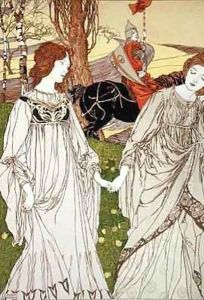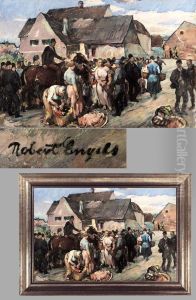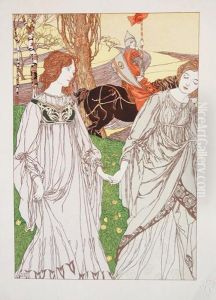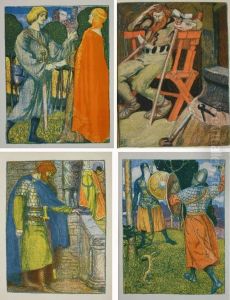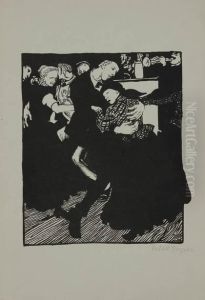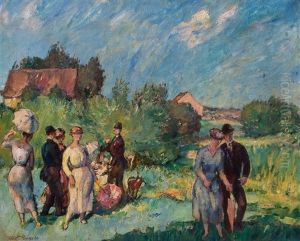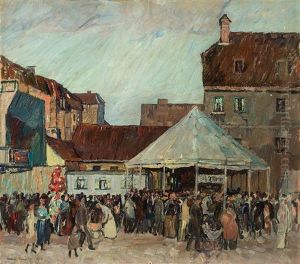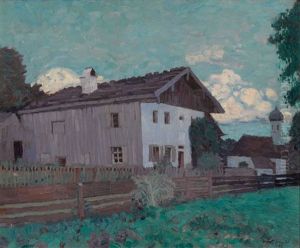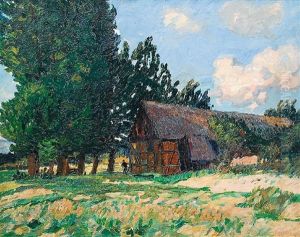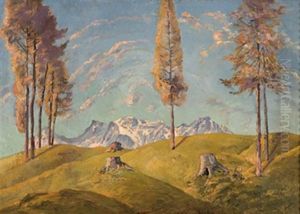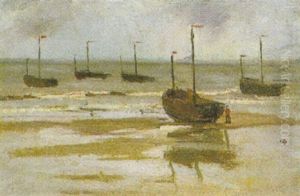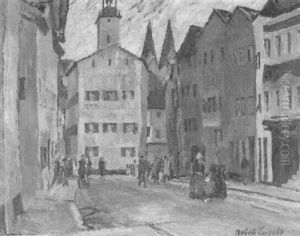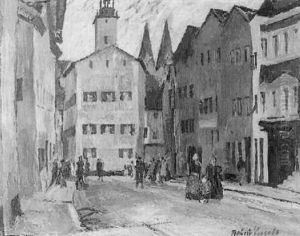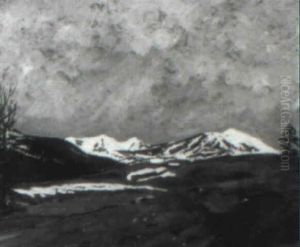Robert Engels Paintings
Robert Engels was a German painter, graphic artist, and sculptor who was active in the late 19th and early 20th centuries. Born on October 27, 1866, in Vöhringen, Bavaria, he was part of the Munich Secession movement, which was a group of artists that broke away from the more traditional and academic styles of painting that were dominant during that time.
Engels received his artistic training at the Academy of Fine Arts Munich, where he studied under notable artists such as Wilhelm von Lindenschmit the Younger and Ludwig von Löfftz. His style was influenced by the Symbolist movement and Jugendstil, the German variant of Art Nouveau. Engels' work often featured mythological and allegorical subjects, and he was known for his skilled use of color and form.
Throughout his career, Robert Engels exhibited his work widely. He participated in exhibitions with the Munich Secession and had his work showcased in various galleries and museums. Despite his involvement with the Munich Secession, Engels' work also contained elements of Realism, and he never fully abandoned the representational approach to art. His oeuvre includes a variety of mediums, from oil paintings and watercolors to prints and sculptures.
Engels' work was well-received in his lifetime, and he was regarded as a significant figure in the Munich art scene. However, his fame did not spread far beyond Germany, and he remains less well-known internationally than some of his contemporaries. Robert Engels died on August 14, 1926, in Munich, Germany. Today, his work can be found in several German museums, and he is remembered as a versatile artist who contributed to the richness of early 20th-century German art.
